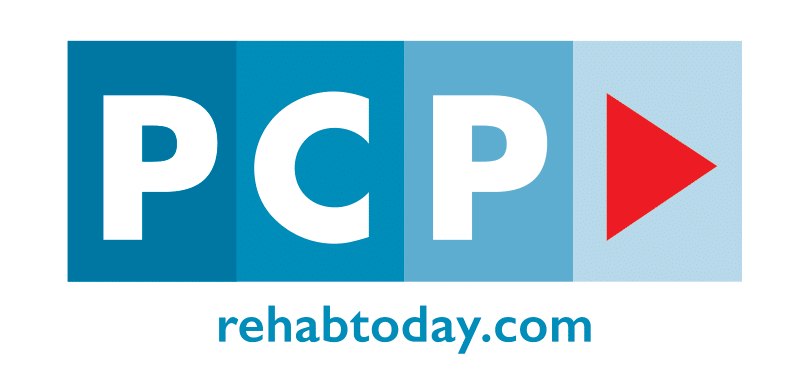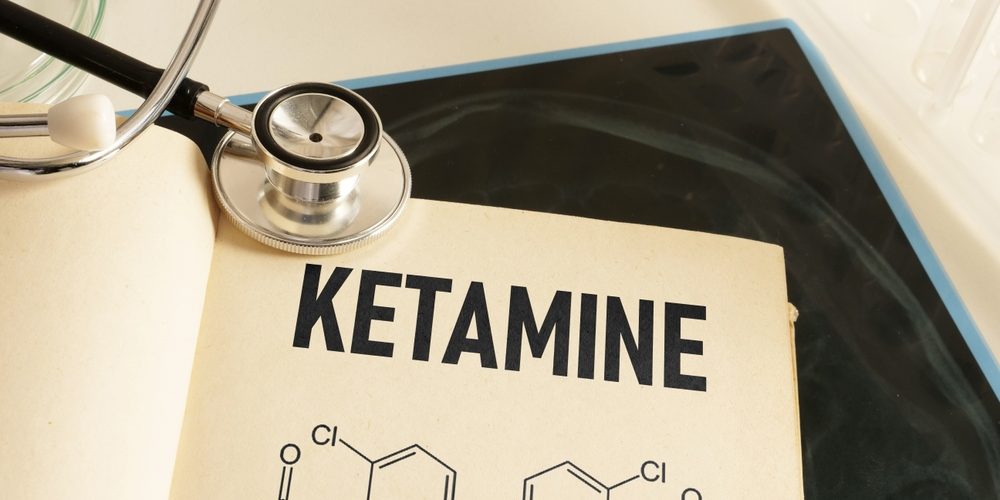In today’s world, 11% of the population still abuses ketamine to seek a sense of euphoria or detach from reality. Unfortunately, this recreational misuse comes at a steep cost. Ketamine is classified as a dissociative drug and is widely used as a recreational drug, often referred to as recreational ketamine when used outside medical settings. Recreational ketamine use is associated with significant risks, including severe bladder damage.
Aside from addiction and mental effects, ketamine really does a number on one organ in particular — your bladder. In this article, we’ll explore how ketamine can silently destroy your urinary system and what you can do to reverse the damage.
Everything About Ketamine

Ketamine is a potent sedative and was first discovered in the 1960s. Back then, doctors used it as an anaesthetic because it was safer than many other sedatives. However, in the late 20th century, the drug’s brain-altering effects caught the attention of recreational users.
Ketamine gradually made its way from operating rooms to parties, clubs, and even intimate gatherings. People often call it ‘Special K’ and usually snort, inject, or swallow it to check out from reality for a while. Recreational ketamine use, as part of broader recreational drug use, carries significant health risks, especially concerning the urinary tract and bladder.
Even today, many healthcare practitioners have been using ketamine to relieve pain or perform emergency procedures. But doctors never recommend taking ketamine long-term because chronic ketamine use and chronic usage can cause long-term health consequences, including damage you can’t undo.
Symptoms
● Hallucinations
● Depression
● Insomnia
● Mood irritability
● Distorts sight and sound perception
Why Do People Take Ketamine?
Drugs aren’t always used to get high or to feel pleasure. Sometimes, there can be many other reasons behind an individual using an addictive substance. However, drugs misuse, especially involving substances like ketamine, can lead to serious health risks for ketamine users. For instance, you may often see people using ketamine for:
Medical Purposes
Doctors still prescribe ketamine to treat chronic pain and provide anaesthesia during surgeries. The drug is known to work quickly without lowering blood pressure, making it a go-to aid for giving emergency treatment to wounds. In many cases, ketamine is also used for managing severe pain when painkillers fail. Some other conditions the drug might be prescribed for are:
● Performing Veterinary Surgeries
● Easing Discomfort During Severe Burns
● Relieving Painful Medical Procedures
Treating Mental Health Issues
Ketamine has been found extremely effective in dealing with mental health problems. Mental healthcare practitioners often prescribe the drug when other treatments fail. Specifically, its low doses have helped treat severe depression and anxiety when therapies aren’t working. Ketamine may also be suggested for many other mental health conditions, such as:
● Reducing PTSD symptoms
● Calming intense anxiety
● Stopping suicidal ideations
Users often describe ketamine as a useful aid in lifting fog off their minds. Many have claimed that the relief is quick but is short-lived. Consequently, many professionals may give it to patients to make them feel stable and then continue with therapies afterwards.
Managing Pain During Neurosurgical Procedures
Because neurosurgical treatments can be quite unpleasant, people frequently faint from stress or worry. In these situations, ketamine is frequently used by physicians to effectively control pain. In contrast to other sedatives, this medication numbs the unpleasant feelings without limiting blood supply to the brain.
Additionally, it’s critical to keep vital signs steady throughout these treatments. Despite being a powerful anaesthetic, ketamine has little effect on respiratory patterns. Because of this, physicians frequently use this medication when doing intricate and delicate procedures.
Recreational Activities
Now, not everyone uses ketamine for medical purposes. Many may use it to feel good and forget about life’s problems for a while. Some may also use it to numb emotional pain or stress. Despite the short-lived effects, people still abuse ketamine to attain peace.
This use might seem fun and harmless at first. But the truth is, using ketamine this way over and over can quickly lead to addiction. Many may not realise that the same drug that helps in hospitals can silently destroy the bladder and kidneys if misused. What starts as a party drug can end up causing pain that lasts far longer than any high. Recreational ketamine users are at particular risk, with many patients suffering from bladder dysfunction, cystitis, and other urinary tract issues as a result of ketamine abuse. Early recognition and stopping use are crucial to prevent ketamine bladder and avoid irreversible damage.
How Is Ketamine Metabolised and Excreted Through Urine?
After you take ketamine, your body doesn’t just let it linger around. Instead, your liver jumps into action pretty quickly, breaking the drug down into other substances, mainly something called norketamine. This byproduct can still have mild effects, but is generally weaker than the original drug.
As ketamine is metabolized, ketamine metabolites are produced. These ketamine metabolites can contribute to bladder inflammation and damage, leading to symptoms such as pain, urgency, and reduced bladder capacity.
Once these breakdown products are ready, your kidneys step in to filter them out of your bloodstream. From there, they leave your body through your urine. For most people, this whole process happens within a day, but small traces might stick around for a bit longer
What Can Ketamine Do to Your Bladder?
Toxins can stress and damage different organs in your body. Likewise, ketamine, being a hallucinogen, can also impact the way your organs function. Unfortunately, when it comes to its misuse, the bladder often takes the hardest hit. Bladder inflammation, urinary tract damage, and urinary tract symptoms are key consequences of ketamine misuse, and early recognition is crucial to prevent irreversible harm. Here’s how its repeated use can destroy this part of your body:
Pressure on the Bladder Lining
Ketamine dependency can inflame and irritate the inner lining of your bladder. Ketamine use can induce inflammation, which leads to bladder symptoms such as pain, urgency, and reduced bladder capacity. As a result, you will feel constant pressure and discomfort while urinating. With time, these symptoms can elevate, resulting in distorted bladder elasticity and inability to hold urine for even a second.
Thinning of the Bladder Wall
Ketamine can also make the bladder wall as thin as paper due to constant pressure. Consequently, you may start to notice frequent leaks and unusual pain in your lower abdomen all the time. Additionally, this thinning of the lining can even weaken your immunity and make you catch infections more easily. If left untreated, this can lead to severe bladder damage, so early intervention is crucial to alleviate symptoms and prevent further complications.
Decrease Bladder Elasticity and Capacity
Our bladder is elastic in nature and can expand while accommodating a certain amount of urine for some time. However, when you are constantly using ketamine, this elasticity can significantly decrease. Because the bladder becomes extremely delicate, it loses its ability to expand properly. And this is the reason you may start to have a constant urge to urinate. Over time, ketamine abuse can lead to a loss of bladder function and the development of a contracted bladder, which further reduces bladder capacity and can cause severe urinary complications.
Ulceration and Fibrosis
Abusing ketamine for a long time can also result in ulcers inside the bladder. Furthermore, if the dose isn’t handled right away, it can also scar the organ’s vital tissues, resulting in fibrosis. Together, these fibrosis and ulcers can make the bladder stiff and cause it to function poorly. As a result, you may experience chronic pain and may even require surgery to reverse the damage. In severe cases of ketamine-induced bladder damage, surgical interventions, including major surgery such as reconstructive procedures or even bladder removal, may be necessary when conservative treatments are not effective.
Understanding Ketamine Bladder Syndrome
Ketamine might not hurt you right away, but using too much for too long can do serious, lasting harm. As discussed earlier, our bladder is the one organ that suffers the most from ketamine abuse. This can result in a condition known as the ketamine bladder syndrome, also referred to as ‘k bladder, which can become very painful and even life-threatening if untreated. Recognising the signs early is crucial—early diagnosis and early intervention are essential to prevent irreversible bladder damage and improve the chances of restoring normal bladder function.
Symptoms
Symptoms of ketamine bladder include a range of lower urinary tract symptoms (LUTSs), such as a painful bladder, urinary urgency, and other physical symptoms. Recognizing these symptoms of ketamine bladder early is important to prevent irreversible damage.
● Constant UTIs: Ketamine can weaken your bladder. It can also make you more likely to get urinary tract infections (UTIs). This happens because your bladder gets weaker and can leak more easily. These are common ketamine bladder symptoms.
● Bladder Pain: If you feel strong bladder pain and use ketamine, you should stop. The drug can inflame the bladder lining and cause pain in your lower belly, leading to a very painful bladder as part of ketamine bladder symptoms.
● Urinary Urgency: Abusing ketamine can make you feel like you need to pee all the time. This happens because the bladder walls get weak and can’t stretch well. This is a lower urinary tract symptom often seen in ketamine bladder syndrome.
● Chronic Lower Abdominal Pain: Many people with ketamine bladder problems feel constant pain or a dull ache in the lower belly and pelvis. This pain can disturb daily life and sleep. It usually does not go away without a doctor’s help and is one of the physical symptoms of ketamine bladder.
● Reduced Bladder Capacity: Using ketamine for a long time can shrink your bladder’s size, resulting in a small, painful bladder. This means you can’t hold much urine. You may need to use the bathroom more often and may leak urine if you can’t get there in time. This is a key ketamine bladder symptom.
● Severe Kidney Problems: If your bladder is badly damaged, it can also hurt your kidneys. Blockages, backflow of urine, or many infections can harm your kidneys. This can cause lasting kidney damage or even kidney failure if not treated soon.
Tests
If you or your doctor thinks you might have ketamine bladder syndrome, here are some tests that can help confirm it.
● Urine Test: A simple urine test is usually the first step. It can help detect infections, blood, or abnormal cells that suggest irritation or damage inside the bladder. Urine samples may show blood and inflammation markers, assisting in the diagnosis of ketamine bladder.
● Ultrasound and CT Scans: These imaging tests create detailed pictures of your bladder and kidneys. They can show if the bladder walls have thickened, if there’s swelling, or if the kidneys are affected due to backflow or blockages. Ultrasound and CT scans can be particularly useful for diagnosing ketamine bladder syndrome by revealing inflammation and damage to the bladder.
● Cystoscopy Camera Test: In this test, a doctor inserts a tiny camera through the urethra to look directly inside your bladder. It helps spot inflammation, ulcers, or other visible damage caused by ketamine use. Cystoscopy is important for evaluating the lower urinary tract and can help diagnose ketamine cystitis, which is characterised by bladder damage and inflammation due to ketamine abuse. In some cases, bladder hydrodistention may be performed during cystoscopy as both a diagnostic and therapeutic procedure to assess and manage advanced bladder damage.
● Bladder Biopsy: Sometimes, during a cystoscopy, a small tissue sample may be taken from the bladder lining. This biopsy is examined under a microscope to check for severe inflammation, scarring, or other changes that confirm Ketamine Bladder Syndrome.
Ketamine Addiction and Bladder Health

Ketamine addiction is more than just a mental health struggle—it can have very serious consequences for your physical well-being, especially when it comes to bladder health. One of the most alarming complications is ketamine bladder syndrome, also known as ketamine-associated bladder dysfunction. This condition is marked by a range of severe urinary symptoms that can dramatically affect your quality of life.
People suffering from ketamine bladder syndrome often experience intense bladder pain, chronic pain in the lower abdomen, and a constant urge to urinate. Frequent urination, sometimes every few minutes, becomes a daily reality, making it difficult to work, sleep, or even leave the house. These symptoms are not just uncomfortable—they are a direct result of ketamine abuse, which can inflame and damage the bladder lining and urinary tract.
Over time, continued ketamine use can cause irreversible damage to the bladder and surrounding urinary tract. The bladder may lose its ability to stretch and hold urine, leading to a reduced bladder capacity and persistent discomfort. In severe cases, this damage can extend to the kidneys, increasing the risk of long-term complications.
Ketamine addiction doesn’t just affect the mind; it puts your entire urinary system at risk. Recognizing the signs of ketamine bladder syndrome early and seeking help is crucial to prevent permanent harm. Protecting your bladder health starts with understanding the risks of ketamine abuse and taking steps toward recovery before the damage becomes irreversible.
Treating the Ketamine Bladder
If you’ve been struggling with bladder problems due to ketamine use, it’s important to act quickly to prevent things from getting worse. Immediate cessation of ketamine use, also known as ketamine cessation, is crucial to halt further bladder damage and promote recovery. Seeking professional help for ketamine detox is often the first step in a comprehensive treatment plan.
Here are some key steps to manage and treat Ketamine Bladder Syndrome:
Stop Taking Ketamine
The very first and most crucial step is to stop using ketamine altogether. Stopping ketamine is a key step in preventing further bladder damage and is essential for halting the progression of symptoms. Continuing to use it will only make the damage worse and reduce your chances of recovery. Quitting might be challenging, especially if there’s dependence, but it’s absolutely necessary to protect your bladder and overall health.
Plan Pain Management Solutions
Bladder pain and discomfort can be severe, so proper pain management is important. Doctors might suggest medications to reduce inflammation, relax the bladder muscles, or ease pain. Pain management is an essential part of treating ketamine bladder, often including NSAIDs and other medications. In some cases, medications like botulinum toxin may be used to relax bladder muscles and reduce symptoms. Staying hydrated and avoiding bladder irritants like caffeine and alcohol can also help manage symptoms.
Seek Professional Help
Never try to tackle Ketamine Bladder Syndrome on your own. Seek help from healthcare professionals, who play a crucial role in diagnosing, treating, and managing ketamine bladder. A healthcare professional can guide you through treatment options, which might include medications, bladder instillations, or, in severe cases, surgery to repair or replace damaged parts of the bladder.
Final Words
If you’ve made it this far, it means you truly care about your health or the well-being of someone you love. The damage caused by ketamine can feel overwhelming, but with the right medical guidance and emotional support, healing is possible. Regular monitoring and health check-ups are essential for individuals recovering from ketamine addiction to ensure long-term recovery and prevent relapse.
At PCP, we’re here for you, every step of the way. Our team offers compassionate services to treat not just the physical damage but also the emotional struggle that comes with substance use. Rehabilitation often includes support groups that foster a sense of community for recovery, helping individuals feel less isolated during their journey.
Contact us today to secure an appointment.
Author
-
Dr Otulana is PCP’s longest-serving doctor. He is an experienced Physician with Specialist Interest in Substance Misuse Management and he has a wide range of experience in the assessment and management (including detoxification) of clients with various drug and substance addiction problems. Dr Otulana started practising as a doctor in 2000 and with over 10 years as an Addiction Physician. He is an Advanced Addiction Practitioner Member of Addiction Professionals and also holds the Certificate in Clinical Psychopharmacology (Part 1) of the British Association for Psychopharmacology. He is additionally a strong healthcare services professional with a Master of Business Administration (M.B.A.) degree from Cambridge University Judge Business School.
View all posts








